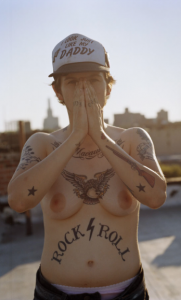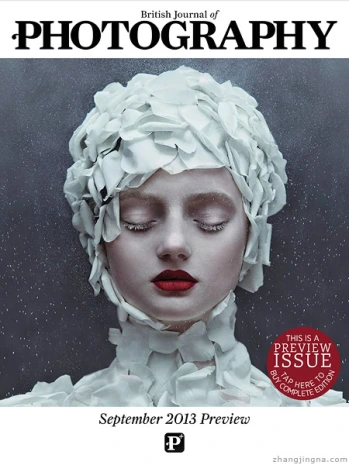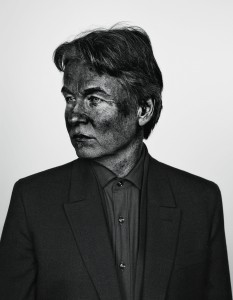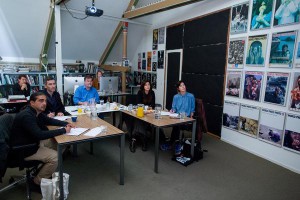I was doing a shoot for Golf Digest with Christian Iooss, the magazine’s director of photography. We were photographing a celebrity who golfs with a bunch of set-ups. I have worked with Christian and his deputy picture editor, Kerry Brady, a few times in the past.
It occurred to me that this was probably Christian’s first shoot where he just happened to be surrounded by all women. On that day, my two assistants, Lyndsey Newcomb and Rebecca Reed, were women, and the prop stylist Helen Quinn also had an entirely female crew. Christian and I talked about the differences between men and women photographers, some of which were apparent, others seemingly assumed by certain photo editors.
I always recognized that the editorial side of media seems to embrace, or at least maintain, the good-ole-boy network. It’s bothered me for some time, particularly given the female talent in the market on the demand and supply sides. There are plenty of amazing women photographers out there who are not getting hired by magazines in spite of the fact that the majority of photo editors are women. I’m pretty sure the breakout among photo editors is 80% women and 20% men. With that figure in mind, I realized that of the editors who hired me it was a 50/50 split of female to male. The same thing goes for art buyers. Seriously.
After the shoot, Christian forwarded me a thoughtful blog post by a photographer named Daniel Shea. Daniel observed that there was an absence of women working on the magazines for which he was currently shooting and questioned why?
Thank you, Daniel. I have been questioning this for a very long time.
When in college, I spent hours at the library, looking at photographers whose work captured my imagination. I was into Sally Mann, Nan Goldin,Richard Avedon and Helen Levitt. When I opened magazines, I was inspired by the work of Annie Leibowitz, Sheila Metzner, Sarah Moon, Peggy Sirota,Pamela Hanson, Brigitte Lacombe and Ellen von Unworth. They were doing what I wanted to do. They were women photographers with their own vision who were making beautiful work. Mary Ellen Mark was my idol, closely followed by Melodie McDaniel, Cleo Sullivan, Dana Lixenberg and Elaine Constantine.
I would scour magazines to find the latest and most interesting work. I would rip out the pages from Vibe, Paper, and i-D with the work of Melanie Mcdaniel, Elaine Constantine, Dana Lixenberg, Cleo Sullivan, Anna Palma and Corinne Day. They inspired me. I loved their work. I loved their perspective. It made me think in a different way, and I learned from it. I would read The New York Times and be inspired by Brenda Ann Keneally. I printed at Printspace next to Baerbel Schmidt, Justine Kurland, Error! Hyperlink reference not valid., Sylvia Otte, Gillian Laub, Elinor Carlucci, Tracey Baran and an assortment of guys whose careers took shape much differently than mine.
When I arrived in New York City in 1995, I began assisting many photographers, including Jill Greenberg, Tria Giovan, Anna Palma and Ellen Silverman, none of who had assisted and all of whom had their careers going. I also worked for a bunch of male photographers. It was much harder to be a female assistant. I would work for fashion photographers as a second assistant and literally feel invisible on the set because the other women were skinny models who were sixteen years old. When I would pick up from the equipment rooms at any of the big studios, I was routinely treated like a “girl who couldn’t possibly know anything.” The men running the equipment rooms were bullies who hated their jobs and took it out on assistants who were not part of the cool club. Pier 59 anyone?
What I learned from Jill Greenberg was that you didn’t have to know everything technically. One could figure it out by experimenting or have an assistant show you how to do it. I saw her experiment and test things and be creative. She knew what she wanted. Jill was just a year older than me and she was doing it. We had our differences, but she took Michele Pedone and me under her wing and gave us solid work for a year on cool shoots as opposed to working for still life photographers wiping off perfume bottles.
When I look through magazines or online, if I see a picture that I love, 9 times out of 10 it is the work of a female photographer.
George Pitts was instrumental in hiring women and black photographers and showing a completely different perspective to the world. Vibe was first where I saw many incredible female photographers. It was breathtaking. Pitts told me once that he thought women were better photographers and it really stuck with me because I agreed. My favorite photographers have always been women.
I can’t tell you the number of times that people would come to my shoot and walk right past me looking for the photographer. Or how many times that I’ve been asked if I was the makeup artist simply because I was a woman standing on the set.
Some female photo editors who will go unmentioned that I have worked with put their own glass ceiling issues above women photographers.
Translation: Women don’t frequently help other women in business, even when it benefits both. A lot of times my work and that of other female photographers is relegated to the front of the book (magazine speak for work appearing before the feature well), while male photographers get the cover or the big feature story. Conversely, some of the male photo editors that I’ve worked with have given me some of my most challenging assignments that I am sure a female photo editor in the same position would never give to a woman.
There are many female photo editors who really do hire equally and have supported me throughout my career, and I am very thankful for and could not have succeeded without them: Leslie dela Vega, Doris Brautigan, Nickie Gostin, Michelle Molloy, Brenna Britton, Kathy Ryan, Crary Pullen, Lucy Gilmour, Donna Cohen, Rebecca Simpson Steele, Amelia Haverson, Fiona MacDonagh, Kathy Nguyen, Rebecca Horne, Heidi Volpe, Florence Nash, Helen Cannavale, Phaedra Brown, Julie Claire, Ernie Monteiro, Donna Cohen, Sarah Harbutt, Yvonne Stender, Kate Osba, Raquel Boler and Michele Romero…to name a bunch.
When I was pregnant, I was worried that no one would hire me if they knew, so I didn’t tell any photo editors until I wasn’t allowed to fly anymore. After I had my daughter, Maya, photo editors like Marianne Butler, Victoria Rich and Suzanne Regan hooked me up with jobs that were in NYC for a while, or said you can bring the baby.
When I get a call for a shoot, usually my first call is not to secure an assistant, but to make sure I have childcare coverage. I live in a community where I know other parents that are able to pick up my daughter if my shoot runs late or even have her sleep over. I feel blessed to make a living as a photographer. I love what I do.
And those skills of being able to manage a business, a household and a child are things that have taught me to troubleshoot and always be prepared for surprises that require solutions. I know that if an assistant, stylist or babysitter doesn’t show up I will still be able to do the job.
Daniel Shea says, “In my own personal experience shooting high-profile people and situations, shoots can get tense quickly, and you have to be able to be aggressive and assertive in a time-crunch situation. That is in no way meant to suggest that women can’t do that, but here is where sexism rears its ugly head—if women are perceived as being less able to handle those situations, that can definitely factor into the decision to hire men.”
The constant multitasking that is my life as a woman, mother and photographer makes me more qualified to deal with time crunch and stressful situations better than most. I am completely confident when doing three set-ups in an hour, which I did the other day, or handling the “you will have 10 minutes with this person” shoots. I can do these shoots with my kid pulling my hair or climbing on me because I can shut out everything except the shoot. It’s the nature of the job. It’s also my life.
One photo editor I spoke to told me, “As a photo editor (and not a photo director), I get to choose a short list of photographers, send them to my boss and hopes that he/she picks the one I want to use. I think a lot of time PEs want to hire women and their directors go for the guys—I don’t know why that is, maybe because they have a history, maybe its because their name is better-known. I have had many—MANY—conversations with editor friends of mine who keep having to hire the same male photographers because that is what their boss wants, I think most, if not all, PEs see the ratio and realize it’s fucked up.”
Women and men get different things from their subjects. It’s how we relate to each other. This is an important conversation. I know that Daniel Shea is compiling a list of female photographers that he would endorse which is great. I have my own list worth sharing.
My list has been in my head since I started shooting, and it keeps getting bigger. I am always checking out and inspired by the really cool work of women photographers. What female photographers’ work matters most lately? Delphine Diallo and Sarah Wilmer blow me away. Livia Corona, Lauren Greenfield, Gail Albert Halaban and Elaine Constantine are all doing things in different media, but to great effect and on their terms. Dulce Pinzon, Maggie Soladay, Amanda Kostner and LaToya Ruby Frazier are pushing cultural, social and economic boundaries with their extraordinary work. Error! Hyperlink reference not valid. started her own fashion magazine, called Odalisque, where she employs a ton of women photographers. And the female brands behind some of the biggest corporate brands: Olivia Bee and Elizabeth Weinberg.
That Daniel Shea is bringing up this issue is important. But what of the many women—photo editors, for example—who can do the same but choose to sit on the sidelines instead, avoiding taking risks and playing it safe to their own career benefit? Women will rise in greater numbers when other women take risks by pushing the talents of unknown and little-known women, and by the continued support of men who have the power and influence to get women recognized. It’s not an either-or scenario. Both things have to happen. And men need to stop hiring other men who are just like them. By default that places women at a disadvantage.
Here is a big list of women photographers who are all…. killing it.




